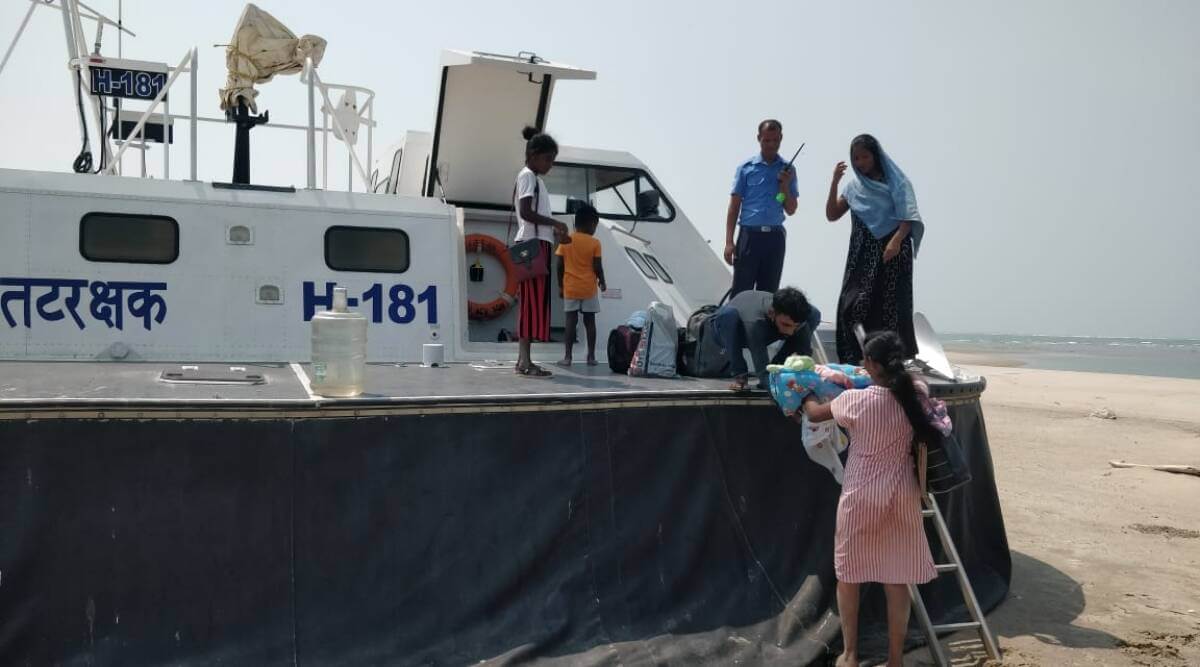16 Sri Lankan Tamils from Jaffna and Mannar reached the shores of Tamil Nadu on Tuesday in two batches in an attempt to escape unemployment, inflation, and severe fuel and food shortages on the island nation.
The Sri Lankans who reached India as refugees say that they could not survive due to the high cost of living and unable to feed their children. They add that, what they earn is not enough to lead a life here. #SriLanka pic.twitter.com/YhW7PNNIUI
— Kavinthan (@Kavinthans) March 22, 2022
The first six included a couple and their four-month-old child as well as a woman with her two children; they arrived in Rameswaram and were rescued by the Indian Coast Guard. The six refugees have been charged with violating the Indian Passports Act and are likely to be detained by Indian officials. They claimed to have paid Rs. 50,000 to fishermen who dropped them off at the Arichal Munai islands in Indian territorial waters. They also informed that several other families were considering fleeing to escape the rapidly deteriorating economic situation in Sri Lanka.
Indian Coast Guard apprehended 6 Sri Lankan nationals including 3 children from the fourth island near Rameshwaram, Tamil Nadu. They were trying to migrate illegally from Sri Lanka to India through a boat. pic.twitter.com/em5XhlAQB4
— ANI (@ANI) March 22, 2022
The next ten arrivals, including three women and five children, reached the Indian shores on Tuesday night. They reportedly spent about Rs. 3 lakh ($3,900) for their journey from Mannar to Rameswaram.
According to Intelligence officers in Tamil Nadu, “around 2,000 refugees” are expected to arrive in India from the northern regions of Sri Lanka, which has a significant Tamil-speaking population. Similarly, the Eelam People’s Revolutionary Liberation Front (EPRLF) chief, Suresh Premachandran, warned, “It may be the beginning. More people are likely to leave the country unless the economy stabilises.”
In addition, VS Sivakaran, a Mannar-based rights activist, warned that the “panic and anxiety” amongst Sri Lankans could result in an “exodus.” He added that he was in touch with several Sri Lankans with relatives and contacts in Tamil Nadu who are seeking to make the journey to Indian shores.
Inflation in Sri Lanka has hit 15.1%, the highest in Asia. Food inflation, in particular, has risen to 25.7%. As of Tuesday, the cost of one kilogram of rice had risen to 290 Sri Lankan rupees ($1) and is expected to hit Rs. 500 ($2) by next week. Similarly, the price of milk powder has increased by Rs. 250 ($1) per 400 grams over the last three days.
I’m witnessing the Sri Lanka economic crisis firsthand. People are standing in line for hours for petrol. Power cuts are frequent and random.
— Janet Wu (@JanetWuNews) March 20, 2022
This is not because of Covid. @Quicktake @business @bloombergbaybiz pic.twitter.com/AxurVfSslx
Furthermore, oil and petroleum prices have also sky-rocketed after Sri Lanka closed down its only refinery and thereby exhausted its crude oil stocks. In response, protestors have blocked roads in anger over their inability to purchase kerosene for cooking. There have also been reports of individuals hoarding oil amid surging prices. Consequently, the Sri Lankan government has deployed the army at petrol stations to “discourage any unrest.”
At Orugodawatte today. People protested demanding kerosene for them. Most of them are daily wage earners. #SriLanka pic.twitter.com/5seXnSd2z3
— Kavinthan (@Kavinthans) March 21, 2022
Against this backdrop, Sri Lanka is seeking a $2.5 billion line of credit from China. India, too, has provided $1.4 billion in support to Sri Lanka since January and approved an additional $1 billion in emergency financial support last week.
Also Read: India Cannot Leave Its Sri Lankan Tamil Refugees In Limbo Any Longer
The Sri Lankan Tamils who have already escaped this crisis to reach Indian shores, however, may find themselves in a new predicament altogether. It is estimated that there are already roughly 100,000 Sri Lankan Tamils in India, with around 19,000 families, or 60,000 people, living in 107 camps across Tamil Nadu, making them the largest refugee group in the country that is residing in camps. These refugees live in absolute squalor, with just a single 10x15 room allotted to each family. Camp inmates receive a measly monthly allowance from the state government—Rs 1,000 for women ($13.10), Rs 750 ($9.70) for men, and Rs 450 ($5.90) for children. The state also provides free education for children up until 12th grade.
However, they cannot register marriages or births or accumulate more than roughly $2620 in assets. Simultaneously, job opportunities are limited, both within the camps and outside; thus, the majority of inmates are daily wage labourers in menial jobs. As refugees, they don’t have the documentation required by employers in the formal industry, making government and private sector jobs unattainable.
While refugees can choose to register their refugee status with the local police station in order to live outside the camps, they are still required to report to that station on a regular basis. Moreover, by leaving the camps they forfeit the monthly allowance that they would have otherwise received.

